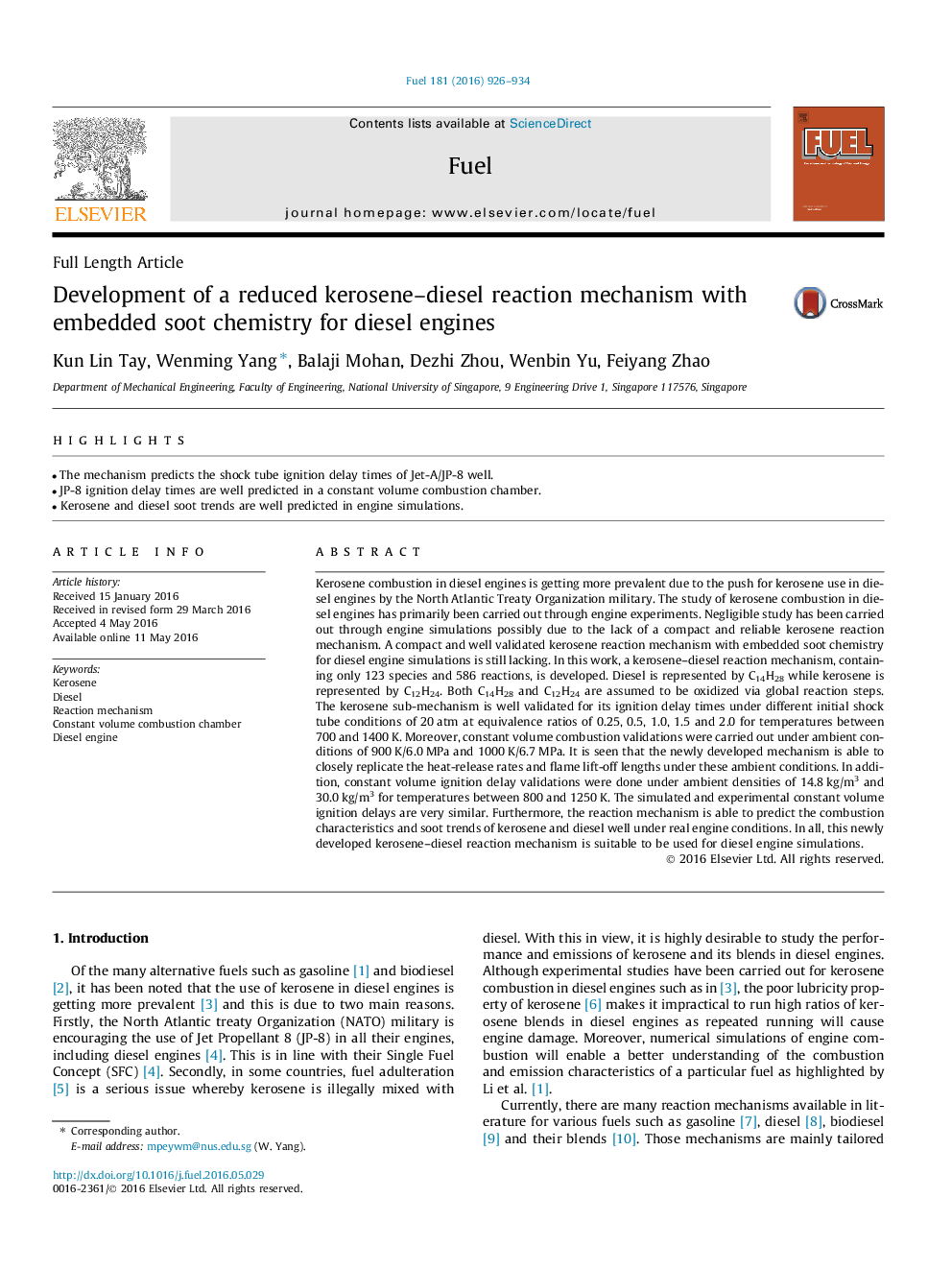| کد مقاله | کد نشریه | سال انتشار | مقاله انگلیسی | نسخه تمام متن |
|---|---|---|---|---|
| 204980 | 461093 | 2016 | 9 صفحه PDF | دانلود رایگان |
• The mechanism predicts the shock tube ignition delay times of Jet-A/JP-8 well.
• JP-8 ignition delay times are well predicted in a constant volume combustion chamber.
• Kerosene and diesel soot trends are well predicted in engine simulations.
Kerosene combustion in diesel engines is getting more prevalent due to the push for kerosene use in diesel engines by the North Atlantic Treaty Organization military. The study of kerosene combustion in diesel engines has primarily been carried out through engine experiments. Negligible study has been carried out through engine simulations possibly due to the lack of a compact and reliable kerosene reaction mechanism. A compact and well validated kerosene reaction mechanism with embedded soot chemistry for diesel engine simulations is still lacking. In this work, a kerosene–diesel reaction mechanism, containing only 123 species and 586 reactions, is developed. Diesel is represented by C14H28 while kerosene is represented by C12H24. Both C14H28 and C12H24 are assumed to be oxidized via global reaction steps. The kerosene sub-mechanism is well validated for its ignition delay times under different initial shock tube conditions of 20 atm at equivalence ratios of 0.25, 0.5, 1.0, 1.5 and 2.0 for temperatures between 700 and 1400 K. Moreover, constant volume combustion validations were carried out under ambient conditions of 900 K/6.0 MPa and 1000 K/6.7 MPa. It is seen that the newly developed mechanism is able to closely replicate the heat-release rates and flame lift-off lengths under these ambient conditions. In addition, constant volume ignition delay validations were done under ambient densities of 14.8 kg/m3 and 30.0 kg/m3 for temperatures between 800 and 1250 K. The simulated and experimental constant volume ignition delays are very similar. Furthermore, the reaction mechanism is able to predict the combustion characteristics and soot trends of kerosene and diesel well under real engine conditions. In all, this newly developed kerosene–diesel reaction mechanism is suitable to be used for diesel engine simulations.
Journal: Fuel - Volume 181, 1 October 2016, Pages 926–934
